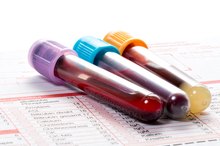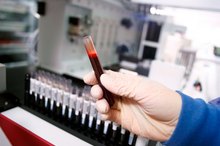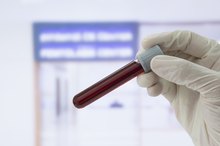A High Number of Leukocytes
When blood tests reveal you have a higher than normal number of white blood cells (WBCs), or leukocytes, this is known medically as leukocytosis. White blood cell counts usually fall between 4,000 and 11,000 cells per microliter. There are different types of white blood cells: neutrophils, lymphocytes, monocytes, eosinophils, basophils and even nondescript immature white blood cells known as blasts. An elevation of any one of these can cause leukocytosis, which is a fairly common laboratory finding. Additionally, WBC counts may be high for any number of reasons. Leukocytosis is a fairly common laboratory finding 1.
If you are experiencing serious medical symptoms, seek emergency treatment immediately.
Causes of Leukocytosis
Elevated WBC counts may accompany different clinical scenarios that range from infection, inflammation, allergic reaction, malignancy, hereditary disorders, drugs, and other miscellaneous causes -- in addition to several normal bodily responses such as:
- stress
- exercise
Unless the cause
- is immediately obvious
- your doctor will need more information to make sense of the finding
- including potentially which WBC types are over-represented
- as well as your entire history
- including any presenting symptoms
- physical findings
Neutrophils
What Causes the Liver to Make Too Much Cholesterol?
Learn More
Infection is the most common cause of elevated neutrophil counts. Most bacterial infections cause what is known as “neutrophilia with bandemia,” where neutrophilia reflects the high count and bandemia refers to an excess of band cells, or immature white blood cells. However, inflammation without an infection – for instance, in rheumatoid arthritis or inflammatory bowel disease – can also produce neutrophilia, as can certain medications such as:
- heparin
- some seizure medications
- steroids
- others
Certain malignancies such as Hodgkin’s lymphoma may produce neutrophilia as well.
Eosinophils
Leukocytosis may also be due to high numbers of white blood cells known as eosinophils, or eosinophilia. Often eosinophilia can be linked to an allergic process or drug reaction. Other illnesses and some skin conditions may also be associated with high WBC counts do to eosinophilia.
Monocytes and Basophils
What Is a Shift to the Left in Blood Testing?
Learn More
High counts of monocytes are associated with certain infections such as:
- lupus,
- certain malignancies
The blood cancers chronic myelomonocytic leukemia, monocytic leukemia, Hodgkin disease and other blood proliferative diseases may produce monocytosis. A high basophil count leading to leukocytosis is rare, but it can occur in chronic myelogenous leukemia.
Emergencies
Leukocytosis greater than 30,000 indicates a bone marrow abnormality and requires immediate medical attention. Levels higher than 100,000--a medical emergency requiring an immediate hematology consult--can cause brain infarction, lack of blood to the brain or hemorrhage.
Reviewed by: Tom Iarocci, M.D.
- Leukocytosis greater than 30,000 indicates a bone marrow abnormality and requires immediate medical attention.
- Levels higher than 100,000--a medical emergency requiring an immediate hematology consult--can cause brain infarction, lack of blood to the brain or hemorrhage.
Related Articles
References
- American Family Physician: Leukocytosis
- The Journal of Biological Chemistry: Heparin-induced Leukocytosis Requires 6-O-sulfation and is Caused by Blockade of Selectin- and CXCL12 Protein-mediated Leukocyte Trafficking in Mice.
- Family Practice Notebook: Leukocytosis
- British Journal of Dermatology: Guidelines for Evaluation and Management of Urticaria in Adults and Children
- European Review for Medical and Pharmacological Sciences: Role of Peripheral Eosinophilia in Adverse Cutaneous Drug Reactions
Writer Bio
A registered nurse with more than 25 years of experience in oncology, labor/delivery, neonatal intensive care, infertility and ophthalmology, Sharon Perkins has also coauthored and edited numerous health books for the Wiley "Dummies" series. Perkins also has extensive experience working in home health with medically fragile pediatric patients.









